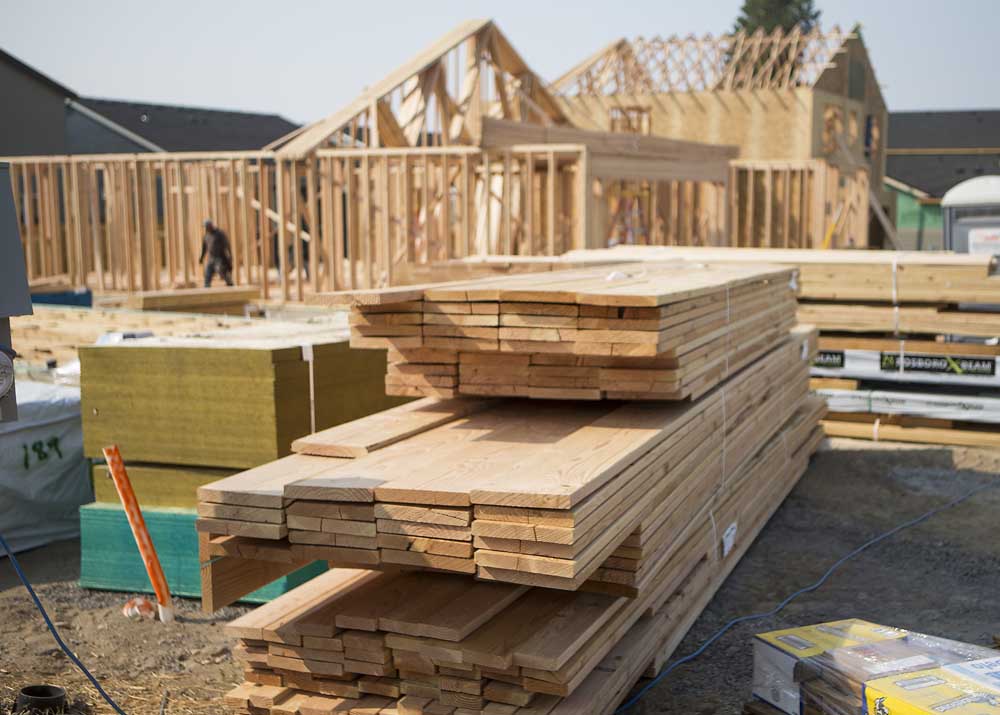Housing permits in Deschutes County surge to highest level since 2006
Published 3:00 pm Tuesday, February 16, 2021

- Piles of lumber and other building materials sit outside several homes under construction by D.R. Horton along Finn Place in Bend in August 2020.
New housing unit permits were up nearly 19% in Deschutes County in 2020 compared to the previous year, indicating that more homes are coming on the market, even as prices continue to soar and inventory remains at historic lows.
In Deschutes County, there were 2,403 new housing units that were permitted for construction last year, 375 more than in 2019, according to data from the U.S. Census. These include 464 units inside apartment buildings and 1,792 single-family homes.
That makes 2020 the year with the most permits issued since 2006.
In 2019 there were 2,028 units permitted in the county. These include 458 units inside apartment buildings and 1,488 single-family homes. In 2018, there were 1,982 total units permitted.
“These (new units) won’t immediately alleviate the housing shortage,” said Damon Runberg, Oregon Employment Department regional economist. “However, they will help move us in the right direction.”
Runberg added that 2021 could see a restart in greater “geographic mobility” as the pandemic subsides and people are more likely to sell their homes with less worry about being in contact with others.
“More churn within the existing housing market combined with new construction means we are looking at less of a supply shortage,” said Runberg.
The demand for housing continues to put pressure on lumber markets.
The average indexed price for pine was $856 in December compared to $499 in the same month a year ago. The price of lumber doubled during the pandemic as homebuilders picked up supplies and homeowners worked on projects at home during the periodic quarantines and lockdowns.
Bruce Daucsavage, general manager for Prineville-based Ochoco Lumber, said there are other factors in play beyond the demand for lumber.
“Mills are not able to increase hours of work due to the lack of workers. Not the lack of logs. All of my friends who run mills say they cannot get people to work,” said Daucsavage.
That lack of workers is lowering production, and in some cases, closing sawmills.
“It is difficult to ramp up production in the West,” said Daucsavage. “The industry rarely builds large inventories and practices just-in-time production methods. There have been zero mills built in the past few years in the West. Small investments are also a concern.”
The building spree hasn’t eased home prices. The median price for a single-family home in Bend hit a record high in January at $580,000, up from $524,000 in December, according to data from the Beacon Report, which compiles prices for Central Oregon. Prices in Redmond have likewise continued to soar, with the median price for a home at $377,000 in January, up from $375,000 in December.
One reason for the continued surge in prices is low inventory, said David Gilmore, broker for Coldwell Banker Bain.
Inventory in Bend is just two weeks, which means if no new homes come on the market, every available home would be sold in two weeks. Historically, Bend has had six months of inventory. The median number of days on the market in both Bend and Redmond was four last month. One year ago it was 115 days on the market in Bend and 119 days in Redmond.
Gilmore said in his 11 years of working in Bend’s real estate market, he has never seen such low inventory.
“This market is challenging,” said Gilmore. “What I am telling buyers what they need now is patience, flexibility, and a willingness to pay over list price because the perfect house may not come up, and if it does ,there could be a feeding frenzy on it.”








